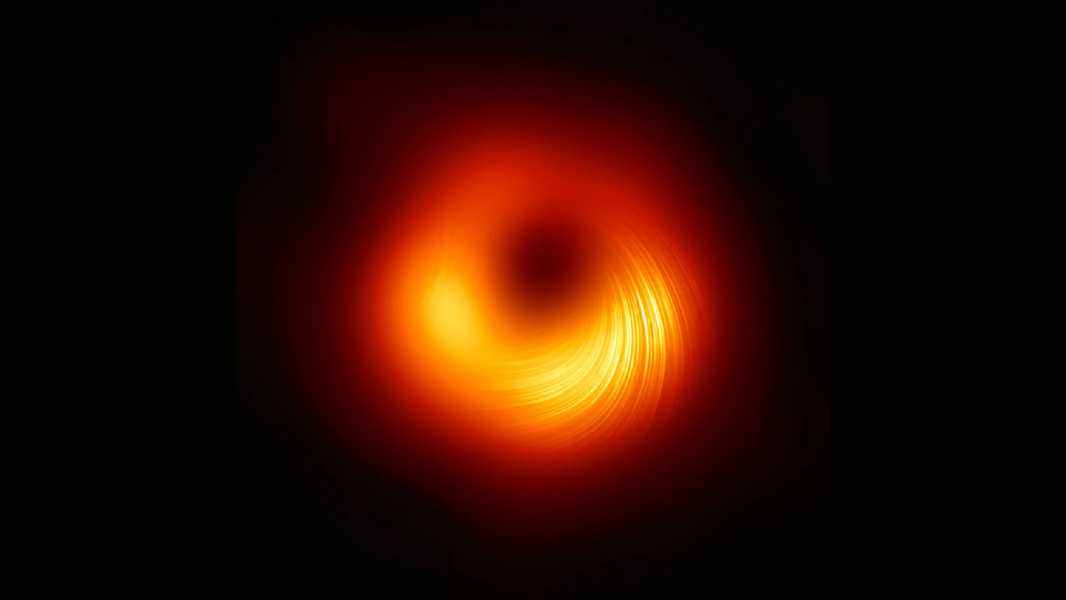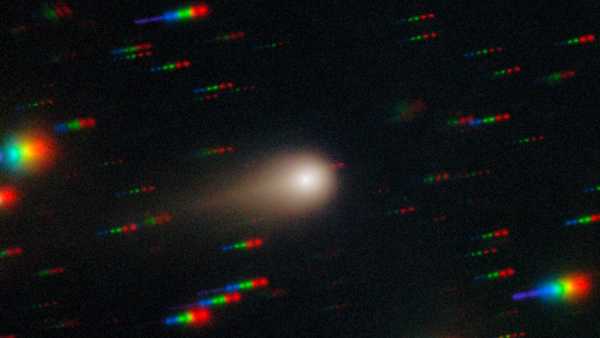
(Image credit: EHT Collaboration)
The enormous black hole lurking at the center of the galaxy M87 is a true behemoth. It’s one of the largest in our neighborhood, making it the perfect first target for the Event Horizon Telescope. Scientists have reimagined the supermassive black hole using those iconic Event Horizon Telescope images, and have now figured out how fast the giant is spinning and how much matter it’s gobbling up.
The results are astounding. This black hole, with a mass 6.5 billion times that of our sun, is spinning at about 80% of the theoretical maximum in the universe. By comparison, the inner edge of its accretion disk is spinning at about 14% of the speed of light — about 42 million meters per second.
The team came to this conclusion by examining a “bright spot” in the original images of the black hole. This asymmetrical glow isn’t just for show — it’s caused by an effect known as relativistic Doppler beaming. Material on one side of the disk is moving toward us so fast that it appears significantly brighter than material moving away from us. By measuring this difference in brightness, the scientists were able to determine the rotation rate.
You may like
- James Webb Telescope Uncovers 'Impossible' Black Hole Mystery
- Incredible photo shows supermassive black hole blasting jet of matter into interstellar space
- 'Very Rare' Jet of Black Hole Energy Discovered Bursting Through Spiral Galaxy Similar to Ours
But here's where things get really exciting. The researchers also looked at magnetic field patterns around the black hole, which serve as a kind of map of how matter is spiraling in. They found that matter is falling into the black hole at about 70 million meters per second — about 23% the speed of light.

Messier 87 with its prominent blue plasma jet from its galactic core (composite image taken by the Hubble Space Telescope in visible and infrared light).
Based on these measurements, they
Sourse: www.livescience.com





